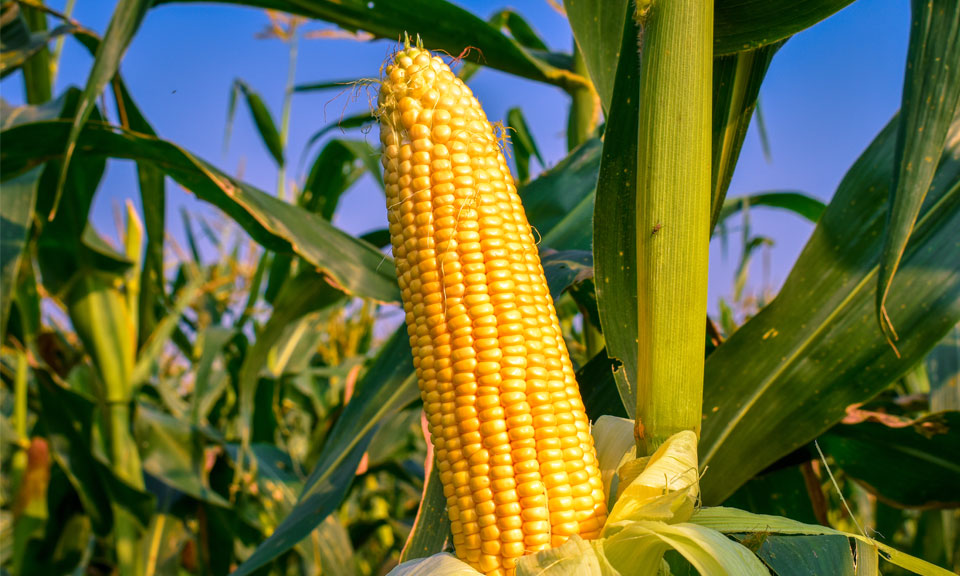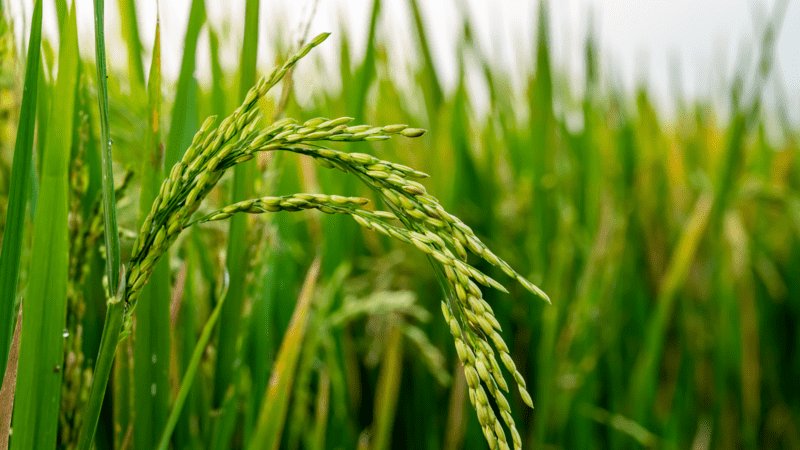BCR raises Argentina's 2021-22 corn output to 49.17 mil mt, up 1.5 mil mt

Argentina's corn production estimate has been revised upward to 49.17 million mt in 2021-22 from 47.7 million mt, the Rosario Grains Exchange, known as BCR, said in a report April 20.
This comes after a fresh survey revealed that the planted area was higher than the initial estimates, according to the report.
The 2021-22 corn crop will be marketed from March 2022 to February 2023.
The BCR has pegged Argentina's total corn crop area at 8.42 million hectares for 2021-22, up from the previous estimate of 7.96 million ha.
"There was no doubt that corn sowing was a record, but growth was estimated at 8% year on year. However, new data and analysis with satellite images are proving that it was much more: Argentina's (corn) area grew 14% compared to the 2020-21 cycle," the report said.
Although corn area in 2021-22 is higher than the last year's level of 7.3 million ha, production is expected to be lower on the back of inadequate rainfall causing damage to the early corn crop and recent frost, which is expected to hit the late-planted corn crop.
The corn harvest in the country so far continues to show lower values for the early corn crop. As corn crops in the south of Cordoba, La Pampa, and San Luis were hit severely by frost, yields are likely to be down, the BCR said.
Argentina, one of the top three exporters, produced 52 million mt of corn in 2020-21, according to the BCR.
Argentina remains a crucial supplier of the cereal as the global buyers wait for the new corn crop from Brazil, the second-largest exporter, to hit the market in July.
In the US, which is the top exporter of corn, farmers are currently focusing on corn planting, and the marketing activity takes a back seat usually around this time.

News
India's wheat stocks in state-run inventories depleted to a 16-year low as the central government sold record quantities to augment domestic supplies and rein in rising prices amid poor crop yields during two previous seasons. Wheat stocks in government warehouses were at 7.5 million mt at the start of April, down from 8.4 million mt a year ago, an official at the Food Corporation of India told S&P Global Commodity Insights. Over the past decade, wheat stocks on April 1 averaged 16.7 million mt. Despite the sharp fall in stocks, the government was able to meet the buffer and strategic reserve norms that mandate holding wheat stocks at or above 7.46 million mt April 1. The government has planned to aggressively acquire wheat to replenish its stocks at state-run warehouses. The government plans to procure around 33.5 million mt wheat produced in marketing year 2024-25 (April-March), nearly 28% higher than the actual procurement of 26.2 million mt a year prior. India could not reach its wheat procurement target in MY 2022-23 and MY 2023-24, as heat waves weighed on the crop size. However, the pace of procurement has slowed over the past week as recent showers in key wheat producing states have delayed harvest operations, traders said. The government has pegged India's wheat output in crop year 2023-24 (July-June) at 112 million mt, slightly higher than the 110.55 million mt harvested in the previous season. However, an S&P Global Commodity Insights survey of 13 analysts and traders found India's wheat harvest in MY 2023-24 is likely slightly lower year on year, at 107 million-108 million mt. Recently, it has ordered mandatory declaration of wheat stocks available with traders, private warehouses, retailers and processors on a government-managed portal effective April 1 and every Friday thereafter, in a bid to ensure availability and prevent hoarding. Record sales The country has delved into state reserves to sell wheat to bulk consumers, as millers to try to curb domestic prices that have been above the state-fixed minimum buying price since the last crop was harvested. India has also provided repeated extensions to the scheme of distribution of free food grains to over 810 million beneficiaries under the Pradhan Mantri Garib Kalyan Anna Yojana for five years effective Jan. 1, 2024, has dampened the prospects for wheat and non-basmati rice exports in 2024. The move is aimed at ensuring food security to the beneficiaries, according to a government statement. The scheme, which was set to end this December, has been extended amid ongoing state assembly polls and upcoming general elections next year. However, if the government misses its procurement target, it may have to look for cheap imports or reduce import duty on the grain to ensure adequate domestic supplies. Despite the tight supply, it has been resisting calls to reduce or remove the 40% import duty on wheat. The government is also likely to extend export restrictions on wheat until March 2025. India banned wheat exports in May 2022, after domestic supplies tightened amid a drop in output. In marketing year 2022-23 (April-March), India planned to export nearly 10 million mt of wheat but ended up shipping nearly 5 million mt. Geopolitical tensions Benchmark grain, oilseed and vegetable oil futures rose overnight in the US and during morning trade in Asia April 19, reversing a bearish streak, after Israel launched a retaliatory missile attack on Iran, fueling fears of an escalating conflict in the Middle East. Any potential supply bottlenecks may spur a rise in export prices of wheat from Black Sea origin, traders said. The most active July soft red winter wheat contract on the Chicago Board of Trade rose 2.6% from the previous close to $5.675/bushel at 0320 GMT. As of 1640 GMT, the contract was trading at $5.62/bushel, up 1.67% from the previous close. In the EU, the Euronext milling wheat contract for May was up 0.4% from the previous close at Eur206.50/mt ($219.88) as of 1640 GMT. Platts, part of S&P Global Commodity Insights, assessed EU 11.5% wheat FOB CVB at $213.25/mt April 18, up $1/mt on the day.

News
Bayer AG has announced the pilot of an expert generative AI (GenAI) system that “quickly and accurately” answers questions related to agronomy, farm management and Bayer agricultural products. The pilot has been developed in collaboration with Microsoft as leading technology partner and Ernst & Young (EY) as an industry partner, the company said. The system is the result of Bayer using proprietary agronomic data to train a large language model (LLM) with years of internal data, insights from thousands of trials within its vast testing network and centuries of aggregated experience from Bayer agronomists around the world, the company said. “Our unique GenAI system has the potential to serve agronomists and benefit farmers all over the world, further advancing AI as an indispensable technology for agriculture,” said Amanda McClerren, CIO and head of digital transformation & information technology for Bayer’s crop science division. Bayer said it is exploring ways to integrate the expert GenAI system into its digital offerings, and the company anticipates broad opportunities for collaboration with other agricultural offerings and partners. “Bayer aims to expand the pilot of the expert GenAI system to selected agronomists and potentially farmers as early as this year, while continuing to advance a separate GenAI prototype allowing users to directly query their own farm data,” the company said. In addition, the partnership between Bayer and Microsoft enables the company to bring ready-made capabilities, AgPowered Services, to the agri-food industry, such as Bayer’s Historical Weather that brings a comprehensive weather dataset to Azure Data Manager for Agriculture that spans the last 40 years and provides detailed, field-level weather insights across global agricultural regions, the company said. Integrating tools from IBM, including from the IBM Environmental Intelligence Suite, the new capability, which was previously available for internal use only, can inform weather risk assessments and actuary processes, Bayer said. It will also be used by Bayer and others to forecast crop seasonality and production changes year over year, as well as train agronomic models, it said. Meanwhile, Bayer is developing a connector that enables access to irrigation data from Lindsay Corp., an industry-leading irrigation solution provider. This expands the data types available to Azure Data Manager's enterprise customers, making it possible for them to connect to irrigation data in the same way as weather, imagery, original equipment manufacturer (OEM) and other data types, the company said. The new cloud offerings will also support regulatory and sustainability reporting, such as providing supply chain traceability that can help ensure compliance with new laws such as the EU Deforestation Regulation, which is expected to go into effect at the end of 2024, Bayer said. This article was first published in chemweek.com. Photo credit: Bayer

News
Asia has seen the fastest growth in biofuels production and exports globally, driven by government policies and export markets for feedstocks. To capitalize on the boom, governments have rapidly pushed out biofuel mandates focused around their country’s main agricultural products. Presently, the largest biofuel producers in the region are China, India, Indonesia, Malaysia, the Philippines and Thailand. Here’s a ready reckoner for Asia’s major biofuel policies along with production, trade and prices. Click for the full-size infographic